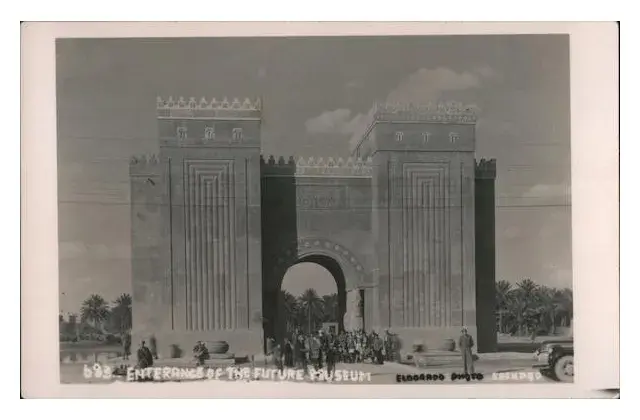Iraq and its 19th Province Kuwait (1990 - 1991)

The Iran-Iraq War had cost Iraq USD 452.6 billion and Iraq ended up with around USD 80 billion in foreign debts. Additionally, Iraq needed a lot of capital to rebuild its damaged infrastructure, while Saddam received requests about how he would deal with his debt servicing. Increased inflation rates and cost of living, empty coffers and growing resentment within the population caused Saddam to consider a new tactic. After harsh, but unsuccessfully appealing to the Gulf Cooperation Council (GCC) to abate his debts, he chose Kuwait as his 'destination'. He accused Kuwait of being to blame for the dumping prices on the oil market and that Kuwait was slant-drilling across the borders into Iraq's Rumaila field. He demanded debt reliefs for the "stolen" oil, but Kuwait underestimated the danger and refused. Looking at Kuwait, Saddam could have had access to financial reserves (USD 100-120 billion in foreign investments alone) and hoped to be able to pay off all war debts. Additionally, Kuwait had 195 billion barrels of oil, which corresponded to 20% of the world reserves at that time. On 25 July 1990, the U.S. Ambassador April Glaspie conveyed to Saddam the message from the foreign minister James Baker, that the United States had no firm opinion on intra-Arab conflicts, such as the dispute between Iraq and Kuwait. Saddam viewed the statement as a carte blanche.
On 2 August 1990 he invaded Kuwait, and the ruling Al Sabah family fled. Kuwait was fully occupied after only two days. On 8 August 1990, Iraq announced that Kuwait was officially annexed as its 19.th governorate. Saddam appointed Ali Hassan al-Majid, also known as "Ali Anfal", as the governor. The invasion was immediately met with international condemnation, including resolution No. 660 by the UN which called on Iraq to withdraw its troops and restore Kuwait's sovereignty. UN resolution No. 661 threatened with sanctions if Iraq refused. Saddam refused all resolutions, even the following. But the sanctions started, which will be on hold until 2003. The UN resolution No. 678 adopted on 29 November 1990 offered Iraq one final chance until 15 January 1991 to implement resolution No. 660 and to withdraw from Kuwait. The USA already started with the so-called Operation Desert Shield, the military buildup from August to January. The majority of the Arab League decided to support the UN resolution No. 660, some countries even joined the coalition.
On 16 January 1991, a 42-country coalition led by the US launched Operation Desert Storm. The operation started with a six weeks aerial and naval bombardment targeting both military and civilian infrastructure inside Iraq. Saddam answered by firing missiles at Israel and Saudi Arabia. Israel was not part of the coalition but for Saddam both onslaughts were considered a military stroke to provoke other directions of defence and to split the international coalition, which was of no avail. As a result of the coalition's 1991 bombings, ninety percent of Iraq's electrical production facilities were damaged. Targets included anti-aircraft facilities, command and communication facilities, military sites, missile-launching sites, research facilities such as the Tuwaitha Nuclear Research Center and the Muthanna State Establishment (part of Iraq's chemical weapon program), oil production facilities, governmental buildings as well as telecommunication centres, television stations and major bridges such as the 14.th July and Al Sharafiya Bridge. They repeated destructive bombing sorties targeting for example key government buildings in Baghdad and often missing the targets, such as in the 1991 bombing of the civilian shelter in Al Ameriya in Baghdad that killed 408 civilians. Within six weeks, more infrastructure was destroyed than in eight years of the Iraq-Iraq War. More importantly, the destruction of the country's electrical generating capacity led to a public health catastrophe because hospitals cannot function without electricity. A decade of harsh suffering of the whole Iraqi population began.
In contrast to the first, the second Gulf War received a massive media response. Protests against the war took place all over the world. However, on 28 February 1991 Saddam had to surrender and on 3 March 1991 the ceasefire declaration was signed in a tent at the airfield of Safwan in Iraq that the second Gulf War had ended. Iraq had losses of 200,000 to 250,000 dead, including 150,000 military. At the end of this war, the country was militarily and economically far behind the initial conditions of the first Gulf War in 1980 and additionally under sanctions.
This article was written by Hella Mewis and is licensed under CC BY-NC 4.0.






